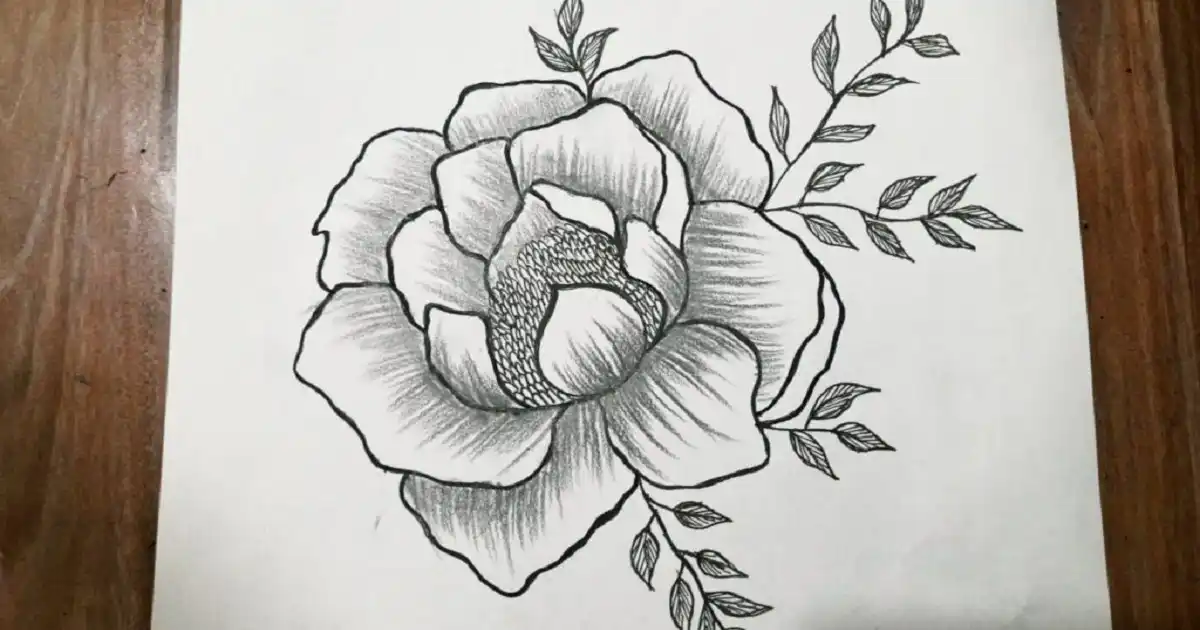Creating beautiful flower drawings has long been a beloved artistic pursuit. This timeless subject allows artists of all levels to experiment with lines, shapes, colors, and textures. Whether you’re a beginner or an experienced artist, flower drawings offer endless possibilities to express creativity. This article will explore everything you need to know about Drawing: b6yad8or5mm= Flower, from essential techniques to creative ideas.
Understanding Flower Anatomy for Drawing
Before you put pencil to paper, it’s helpful to study the structure of a flower. Most flowers consist of five primary parts:
- Petals: The colorful parts that form the visible outer layer.
- Sepals: The green leaf-like structures that protect the bud.
- Stem: The support that connects the flower to the plant.
- Leaves: Often part of the composition, leaves can add context.
- Center (or Pistil and Stamens): The intricate core of the flower.
Familiarizing yourself with these parts will help you create a more realistic drawing.
Materials Needed for Drawing: b6yad8or5mm= Flower
To create a stunning flower drawing, gather the following materials:
- Pencils: A range of soft and hard pencils (e.g., 2H, HB, 4B).
- Eraser: A soft eraser for clean corrections.
- Paper: Smooth or textured, depending on your style.
- Colored Pencils/Markers: For adding vibrant details.
- Blending Tools: Cotton swabs or blending stumps.
Step-by-Step Guide to Drawing a Flower
Step 1: Choose Your Flower
Decide on the type of flower you want to draw, such as a rose, daisy, or tulip. Each has distinct shapes and structures, so pick one that inspires you.
Step 2: Create Basic Shapes
Start with simple shapes like circles and ovals to outline the flower’s components. For example:
- Draw a circle for the flower’s center.
- Add ovals or teardrop shapes around the center to represent petals.
Step 3: Define Petals and Center
Using light pencil strokes, refine the petals. Add curves and imperfections to make them look natural. For the center, sketch intricate details like seeds or stamens.
Step 4: Draw the Stem and Leaves
Extend a line downward for the stem and attach leaves. Add veins to the leaves for realism.
Step 5: Add Texture and Shading
Use hatching and cross-hatching techniques to add depth. Focus on light and shadow to make the petals and leaves pop.
Step 6: Add Colors (Optional)
If you’re using colors, layer them gradually. Start with lighter shades and build up to darker tones for a natural gradient.
Tips for Enhancing Your Drawing: b6yad8or5mm= Flower
- Use References: Study real flowers or photos to capture their unique characteristics.
- Experiment with Angles: Try drawing flowers from different perspectives, like top-down or side views.
- Play with Textures: Incorporate different pencil strokes to mimic petal softness or leaf ruggedness.
- Mix Mediums: Combine pencils with watercolors or ink for a dynamic look.
- Practice Regularly: Improvement comes with consistent practice.
Common Mistakes to Avoid
- Overworking the Drawing: Too many corrections can make it look messy.
- Ignoring Proportions: Keep the size of petals and leaves in balance.
- Skipping Shading: Lack of shadows can make your drawing appear flat.
- Using Excessive Pressure: Hard lines are difficult to erase and can damage the paper.
Creative Flower Drawing Ideas
- Abstract Flowers: Use geometric shapes or bold colors for a modern look.
- Botanical Illustrations: Create detailed, scientific-style flower art.
- Floral Mandalas: Combine flowers with patterns for a mesmerizing design.
- Flower Bouquets: Draw multiple flowers together for a lush composition.
- Fantasy Flowers: Invent unique flower species with imaginative shapes and colors.
FAQs
Q1: How can I make my flower drawing more realistic?
Focus on studying real flowers to observe their textures, shapes, and shadows. Use light pencil strokes for delicate details and add shading to create depth.
Q2: What is the best flower to draw for beginners?
A daisy or tulip is a great starting point due to their simple shapes and fewer details.
Q3: Can I use digital tools for flower drawing?
Absolutely! Digital art software offers tools like brushes, layers, and effects to enhance your flower drawings.
Q4: How long does it take to master flower drawing?
It depends on your practice and dedication. With consistent effort, you can see significant improvement within a few weeks or months.
Q5: Are there specific tutorials for drawing exotic flowers?
Yes, many online platforms and books provide step-by-step guides for drawing exotic flowers like orchids and lotuses.
Conclusion
Drawing flowers, whether realistic or abstract, is a rewarding activity that combines creativity with technique. With practice and experimentation, you can bring stunning floral artworks to life. Start with basic shapes, add intricate details, and play with colors to make your drawings truly unique. Whether for relaxation or skill-building, flower drawing is a hobby that continues to bloom with each attempt.
For more important news please visit my website: instanavigation
